
The Lyre, 131/2″ x 27″, #6- to 8-cut wool on monk’s cloth. Adapted from a design by Alice and Florence LeDuc and hooked by Maria Moechnig, Cannon Falls, Minnesota, 2009. CINDY THURY SMITH
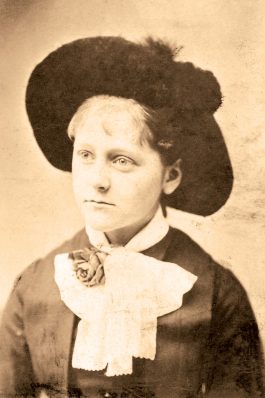
Alice Sumner LeDuc, 1883, age 15. COURTESY OF THE MINNESOTA HISTORICAL SOCIETY
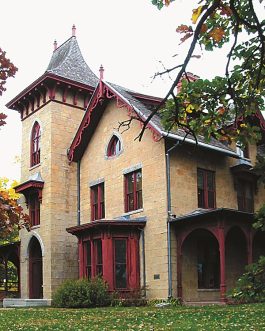
The LeDuc mansion in Hastings, Minnesota. DAKOTA COUNTY HISTORICAL SOCIETY
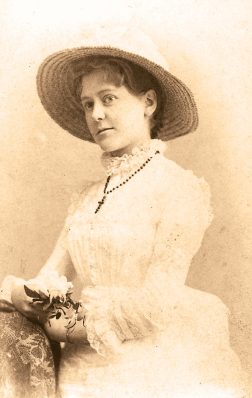
Florence Gray LeDuc, 1885, age 30. COURTESY OF THE MINNESOTA HISTORICAL SOCIETY
In the 1860s, Hastings, Minnesota, was a bustling river town at the junction of the Mississippi and St. Croix rivers. It had just been named county seat, and even though the Civil War was raging, business and construction were booming. One of the buildings under construction was the future home of Alice and Florence LeDuc, two sisters who broke the social barriers of their day and used their artistic talents to design and market their own line of embroidered household linens.
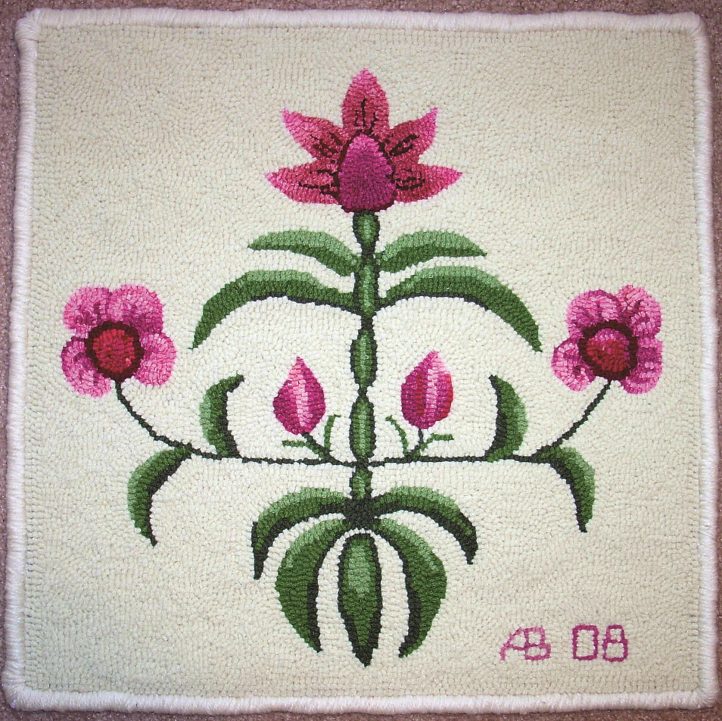
Pedulas in Bloom, 18″ x 18″, #3- or 4-cut wool on monk’s cloth. Adapted from a design by Alice and Florence LeDuc and hooked by Anita Bahls, Hastings, Minnesota, 2008. CINDY THURY SMITH. “Pedula is a word that rug hookers are very familiar with. When hooking a flower of unknown variety, we use our imaginations and do as we please using color, design and character. Although these flowers do not exist in nature, but only in the minds of hookers, they are as real as any rose, daisy, or dandelion. The daughters of General LeDuc had a great sense of design and it was a great opportunity to hook one of their designs and think back to when these young ladies were sitting in the mansion, embroidering these tiny flowers and vines and trying so very hard to make an honest living.” —Anita Bahls
From 1888 to around 1920, Alice and Florence, daughters of Civil War General and U.S. Commissioner for Agriculture William G. LeDuc, created embroidered pieces that were sold throughout the neighboring states and as far away as New York. Their appealing designs were written up in 1903 in House Beautiful magazine. Their business model was flexible: they had stock items for sale, available through a traveling saleswoman, and they visited clients’ homes to design custom embroidered pieces.
The LeDuc daughters did not do all the embroidery themselves. They employed local women to embroider to fill the orders and special commissions. Alice and Florence would design a piece with meticulous notes on colors and stitches and then circulate it to different embroidery artists, each one working on her individual specialty: flowers, greenery, edgings, and so on. The Minnesota Historical Society has the detailed account books showing how the LeDuc daughters, operating as the Hastings Needlework Company, tracked money, supplies, and labor in the production of each piece.
To honor Alice and Florence LeDuc, a competition featuring their designs was held in 2008. Contest participants were invited to interpret twenty-four designs in any media they chose. The resulting entries ranged from silk screening to felted wool to digital prints to a beaded hat. The largest number of entries were hooked rugs.
LeDuc Designs
The LeDuc daughters drew hundreds of embroidery designs. To see nearly 500 of these designs, visit the Hastings Pioneer Room (the City of Hastings’ historical records room). Another 1,200 are stored at the Minnesota Historical Society. Eighty-four of the LeDuc designs are posted on the Internet at the MHS website (www.mnhs.org). Click on the Search Collections tab and type in “Hastings Needlework drawings.”
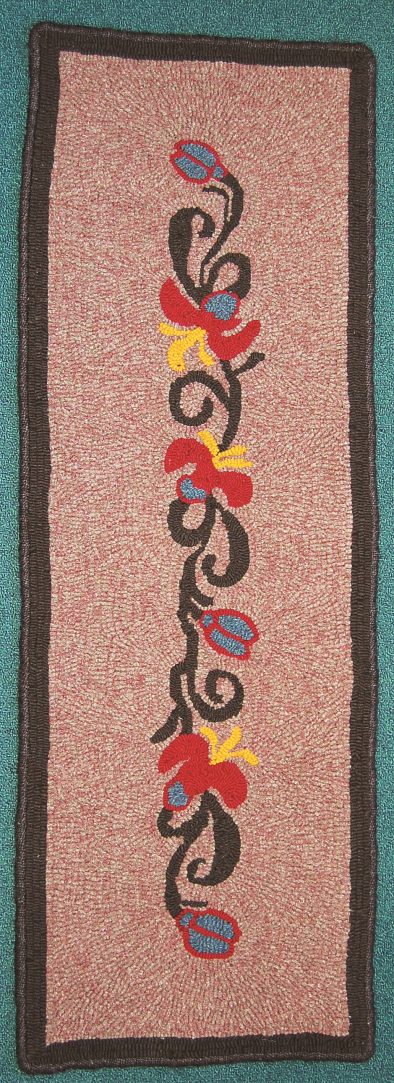
Vining Flower Hearth Rug, 143/4″ x 43″, #8 and #6 cuts on linen, 2009. Adapted from a design by Alice and Florence LeDuc and hooked by Mary Brickzin-Gale, Goodhue, Minnesota, 2009. CINDY THURY SMITH
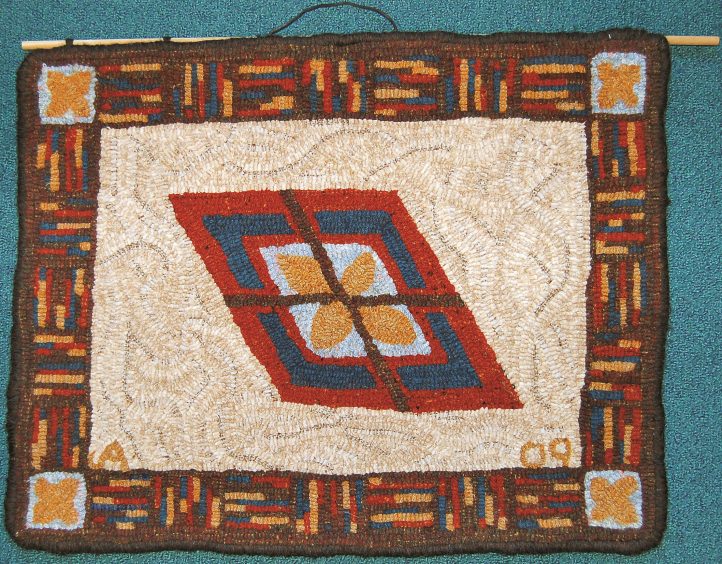
Garden Window, 17″ x 23″, #7-cut new wool on linen. Adapted from a design by Alice and Florence LeDuc and hooked by Jackie Albrecht, Hastings, Minnesota, 2008. CINDY THURY SMITH
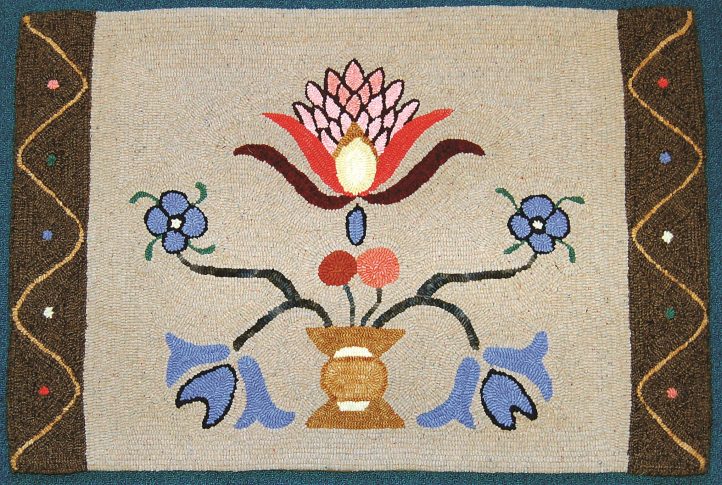
Design #16, 32″ x 231/2″, #8-cut wool on linen. Adapted from a design by Alice and Florence LeDuc and hooked by Ruth Viste, Maiden Rock, Wisconsin, 2008. CINDY THURY SMITH “I chose this design for its elegance. Because of its spare simplicity reminiscent of Scandinavian designs, I used a color palate I associate with rosemaling: salmon pink, gold, and a shade of blue that matches a Norwegian fisherman’s eyes. When I make a rug, I assume it is going to be used on the floor; this rug has been finished with wood yarn used to whip the edges and is bound with twill tape on the back. I added a border to two edges to give the rug a more pleasing proportion, and incorporated some of the colors used in the design to tie the border into the rug.”
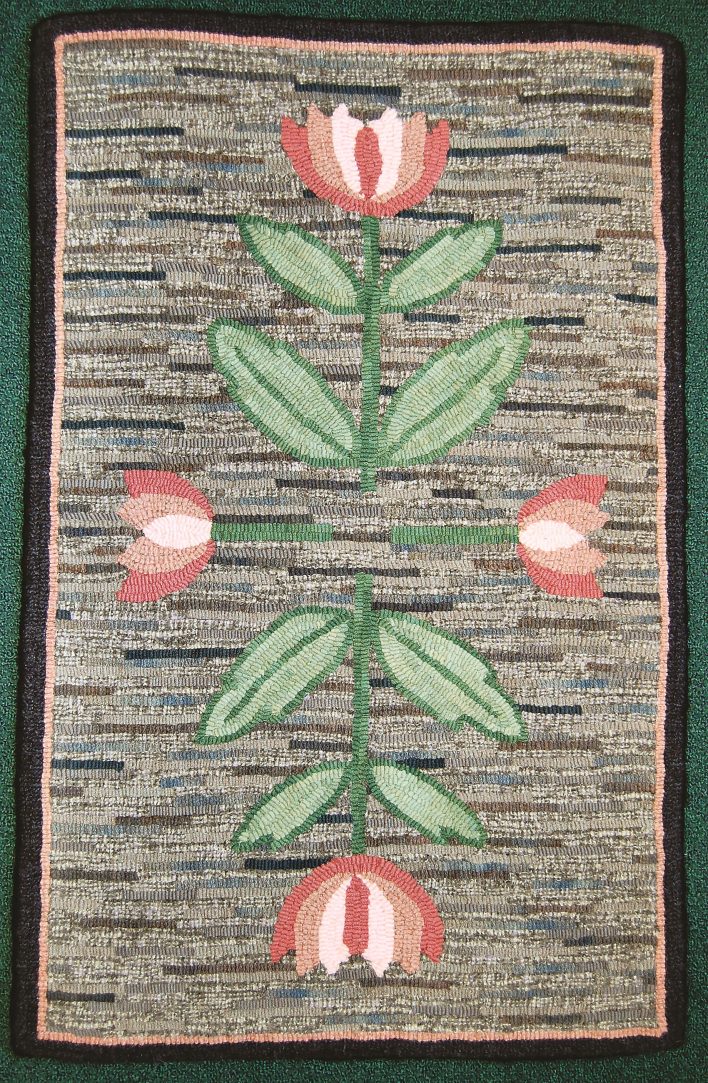
Waterlilies, 32″ x 20″, #6-cut wool on linen. Adapted from a design by Alice and Florence LeDuc and hooked by Pat Gale, Hastings, Minnesota, 2009. CINDY THURY SMITH
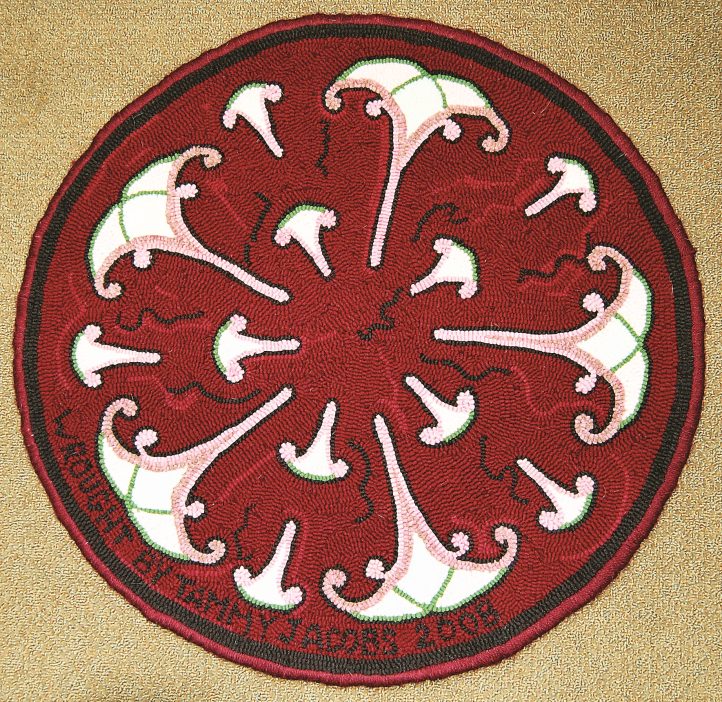
Swirl Rug, 24″, #5-cut wool on monk’s cloth. Adapted from a design by Alice and Florence LeDuc and hooked by Tamara Jacobs, Welch, Minnesota, 2008. CINDY THURY SMITH “I gravitated to this design as soon as I saw it. I enjoy rug hooking and decided to use this pattern, repeating it into a circular design. I envisioned it as a decoration for the center of a dining table. The colors are reminiscent of the Victorian era. I loved doing this rug and as I worked it I often thought of the ladies who used this design so many years ago.”—Tamara Jacobs
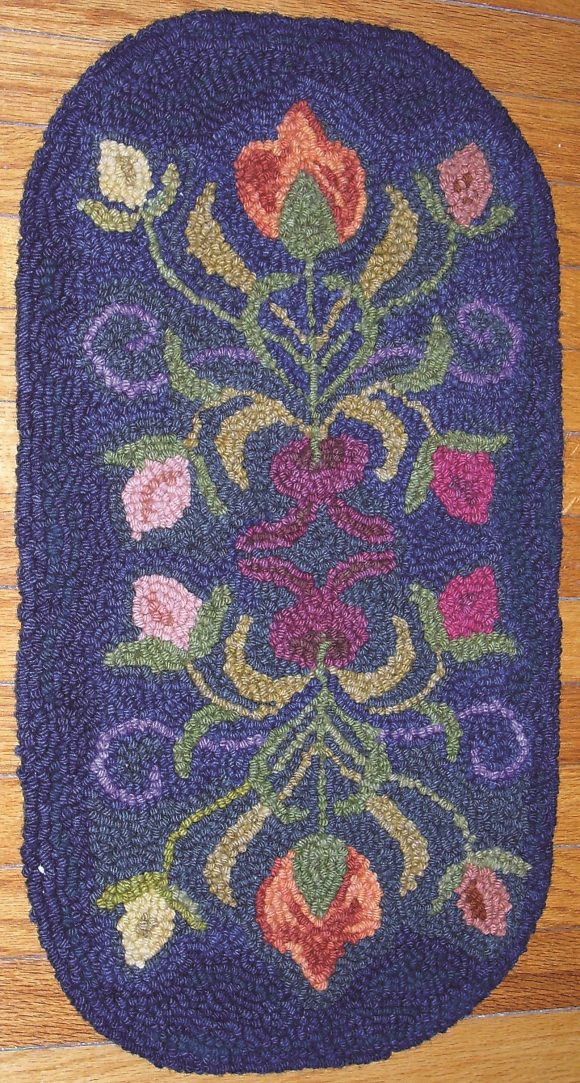
Floral Mat, 131/2″ x 27″, hand-punched, hand-dyed, rug-weight wool yarn on monk’s cloth. Adapted from a design by Alice and Florence LeDuc and hooked by Maria Moechnig, Cannon Falls, Minnesota, 2009. “This colorful floor mat was inspired by looking at my stash of hand-dyed 100% wool rug yarn that I dyed last fall. My sheep were sheared in the spring and the fleece was processed into yarn. I dyed the yarn to create these lovely colors using acid dyes. The yarn was punched into monk’s cloth using an Oxford hand punch needle. I tried to get a vintage look to the mat by making it oval, and using vintage colors. It has a mirrored effect: the deep blue background could possibly be a reflection into a body of water. It is a pure joy to see the whole process, from shearing to hooking, turn into a useful creation from my own sheep.”—Maria Moechnig
